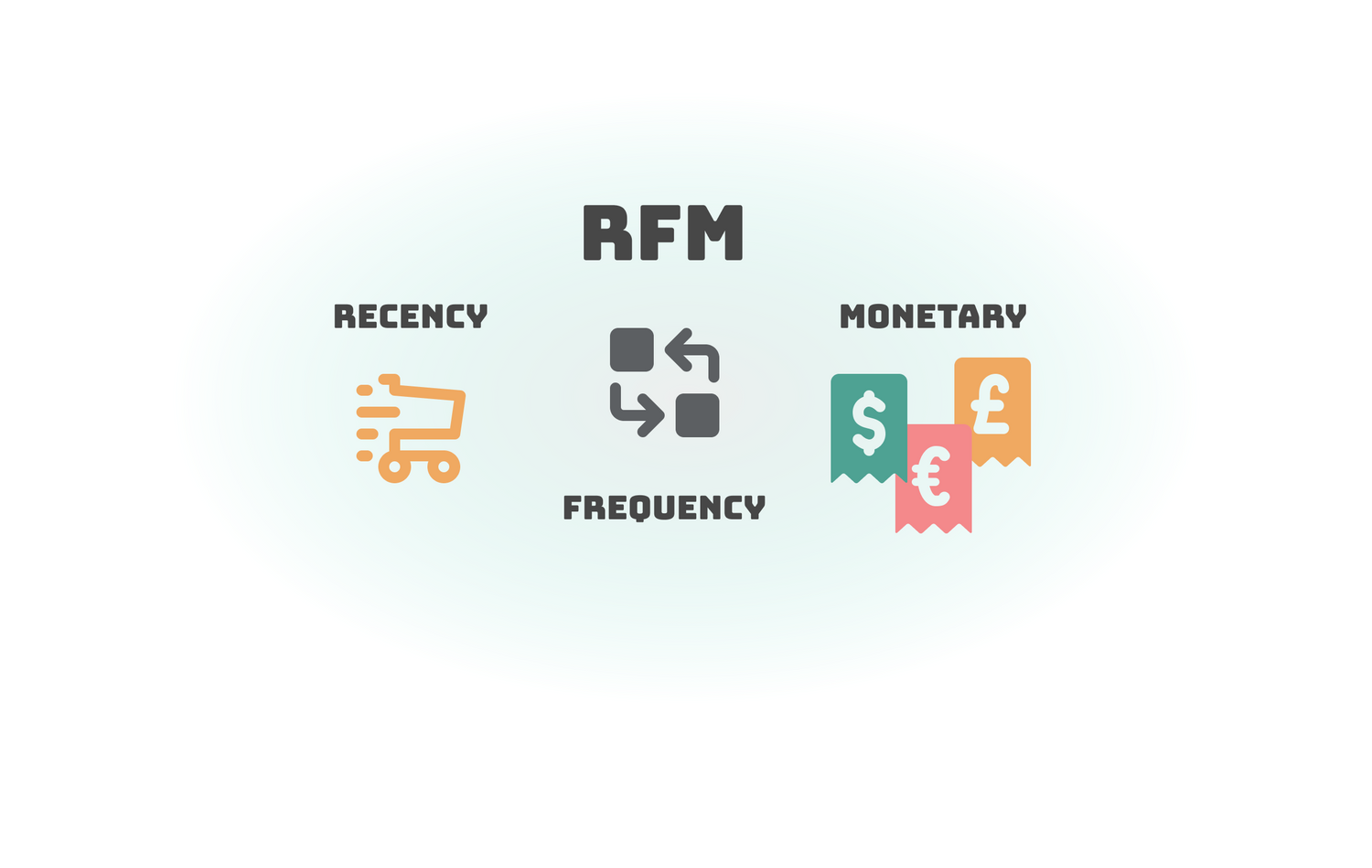One of the most effective tools to increase CLV (Customer Lifetime Value) easily is base customer segmentation to RFM (Recency, Frequency, Monetary) analysis. The RFM analysis became popular in the 1960s and 1970s as marketers sought effective ways to identify high-potential customers for their campaigns.
The underlying principles of RFM are rooted in customer behaviour theories that suggest that customers who have purchased recently, do so frequently, and spend more money are more likely to respond positively to promotions and other marketing activities. Over the decades, RFM analysis has been refined and adapted for use in various industries, particularly with ecommerce.
What is RFM Analysis?
RFM analysis is a method used to quantitatively rank and group customers based on their purchasing patterns. It focuses on three key metrics:
- Recency (R): How recently a customer has made a purchase
- Frequency (F): How often they purchase
- Monetary Value (M): The total amount they have spent
Fortunately, implementing this technique has become more straightforward with solutions like Ellis. Instead of calculating customer scores and segments manually, Ellis simplifies the process of segmenting customers and deriving actionable insights to enhance marketing strategies and customer engagement.
Implementing RFM Analysis
Using Ellis, businesses can harness these dimensions to create a comprehensive view of customer behaviours, helping to identify valuable customer segments ranging from the most loyal shoppers to those at risk of disengagement.

Ellis automatically calculates customer interactions from all connected stores and performs sophisticated RFM analysis on a daily basis updating segment audiences, so that even without separate loyalty programs marketing actions can be targeted efficiently to the most potential audiences.
Ellis Customer dashboards and customer segmentation tool also offers digging deeper on RFM segment details building even better patterns about their buying behaviours. These dashboards present clear, actionable segments, making it easy to tailor marketing efforts directly from Ellis.
RFM Customer Segments
Here's a detailed look at how each customer segment can be addressed with actions:
|
Category |
Recency |
Frequency |
Monetary Value |
Actions |
|
Champions |
Bought recently |
Buy often |
Spend the most |
Reward with exclusive offers, loyalty programs, and first access to new products. Can be early adopters for new products. They will promote your brand. |
|
Loyal Customers |
Spend good amount of money often |
Responsive to promotions |
High |
Encourage repeat purchases with personalised communication and relevant promotions. Upsell higher value products. Ask for reviews and engage them. |
|
Potential Loyalists |
Recent customers |
Made more than one order |
Spent good amount |
Increase purchase frequency with targeted offers and product recommendations. Offer membership/loyalty program, recommend other products. |
|
New Customers |
Bought recently |
Not often |
- |
Provide a great initial experience and educate them about the product range and services. Provide on-boarding support. |
|
Promising |
Recent customers |
- |
Not spent much |
Create brand awareness, offer free trials. |
|
At Risk |
Spent much with high frequency long time ago |
- |
High |
Re-engage with win-back campaigns and special incentives. Send personalised emails to reconnect, offer renewals, and provide helpful resources. |
|
Can’t Lose Them |
Have not returned for a long time |
The biggest purchases with the highest frequency |
High |
Implement aggressive re-engagement strategies. Win them back via renewals or newer products, don't lose them to competition, connect with them. |
|
Hibernating |
Last purchase was long time ago |
Low frequency |
Low |
Awaken interest with reactivation campaigns and special comeback offers. Offer other relevant products and special discounts. Recreate brand value. |
|
About to Sleep |
Below average recency |
Below average frequency |
Below average |
Prevent churn with personalised messages that reconnect them to the brand. Share valuable resources, recommend popular products / renewals at discount, reconnect with them. |
|
Lost |
Purchased long time ago and never came back |
- |
- |
Revive interest with a reach out campaign. Ignore otherwise. |
Conclusion: Why RFM Analysis?
RFM analysis is a widely used approach that transforms data into strategic insights, driving intelligent marketing decisions and building strong customer relationships. Using RFM as part of your marketing strategy can help you identify your top customers and find new ways to market to them based on their buying behaviours, either using personalised emails or targeted paid advertising. RFM analysis has proven to increase CLV, reduce marketing costs, and enhance overall business profitability.
With Ellis as your analytics tool, you can easily build effective growth strategies without needing to delve into detailed customer segment building.
Ellis RFM segments provide a solid baseline recommendation based on tested ecommerce customer nurturing and acquisition strategies to grow your sales. This not only streamlines marketing efforts but also optimised resource allocation, making it a crucial strategy for commerce success.

